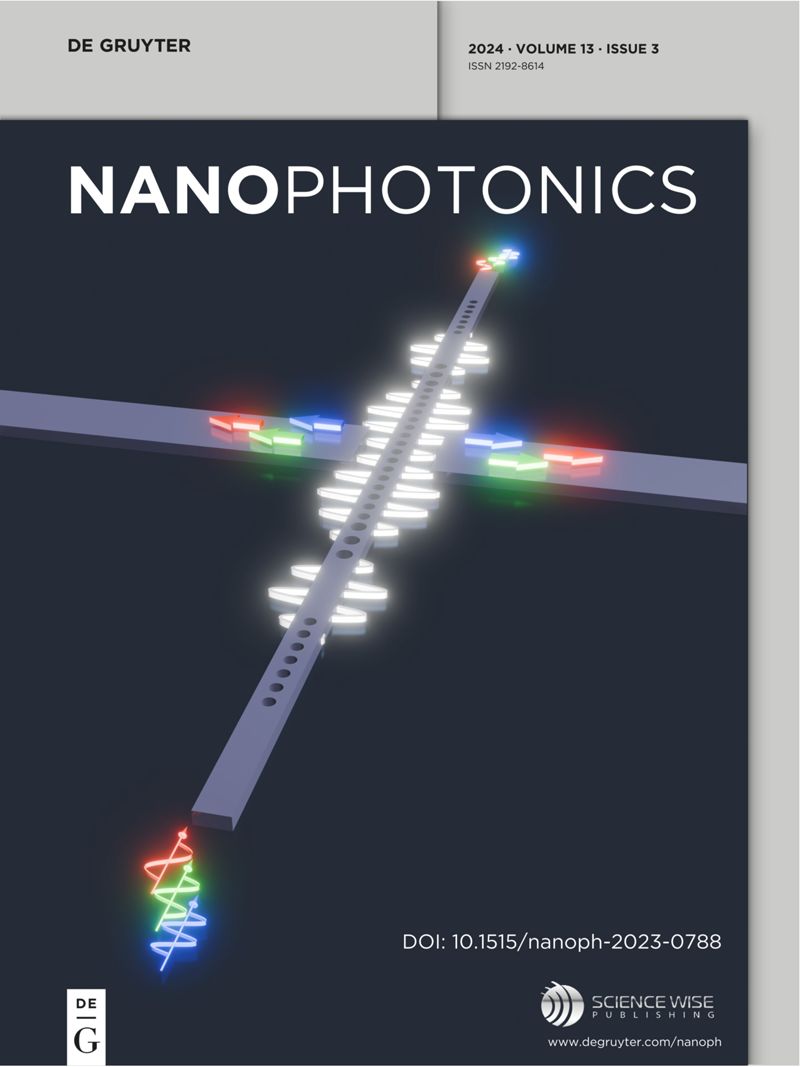Disorder robust, ultra-low power, continuous-wave four-wave mixing in a topological waveguide
IF 6.5
2区 物理与天体物理
Q1 MATERIALS SCIENCE, MULTIDISCIPLINARY
引用次数: 0
Abstract
Four-wave mixing is a widely used nonlinear process for wavelength conversion, parametric amplification and signal regeneration in various Kerr devices, which enables wavelength-tunability and lower-power operation in compact optical systems. Here, we demonstrate low-power continuous-wave four-wave mixing in an ultra-silicon-rich nitride topological waveguide leveraging the strong confinement of the Su–Schrieffer–Heeger topological structure and ultra-silicon-rich nitride platform’s high Kerr nonlinearity and negligible nonlinear loss. We experimentally observe continuous-wave four-wave mixing at an ultra-low pump power of 510 µW, and wavelength tunability of 54 nm with on/off conversion efficiency of −57 dB at a pump power of 3 mW. We further investigate the efficiency of the four-wave mixing process when disorder is introduced into the Su–Schrieffer–Heeger waveguide array resulting in ±80 % randomness in the coupling coefficients. It is experimentally shown that similar conversion efficiencies are achieved in the presence and absence of disorder, indicating robustness against potential fabrication errors. We expect that this work can be applied to develop compact, tunable wavelength conversion systems operating at very low power levels which are robust against certain types of disorder.求助全文
约1分钟内获得全文
求助全文
来源期刊

Nanophotonics
NANOSCIENCE & NANOTECHNOLOGY-MATERIALS SCIENCE, MULTIDISCIPLINARY
CiteScore
13.50
自引率
6.70%
发文量
358
审稿时长
7 weeks
期刊介绍:
Nanophotonics, published in collaboration with Sciencewise, is a prestigious journal that showcases recent international research results, notable advancements in the field, and innovative applications. It is regarded as one of the leading publications in the realm of nanophotonics and encompasses a range of article types including research articles, selectively invited reviews, letters, and perspectives.
The journal specifically delves into the study of photon interaction with nano-structures, such as carbon nano-tubes, nano metal particles, nano crystals, semiconductor nano dots, photonic crystals, tissue, and DNA. It offers comprehensive coverage of the most up-to-date discoveries, making it an essential resource for physicists, engineers, and material scientists.
 求助内容:
求助内容: 应助结果提醒方式:
应助结果提醒方式:


